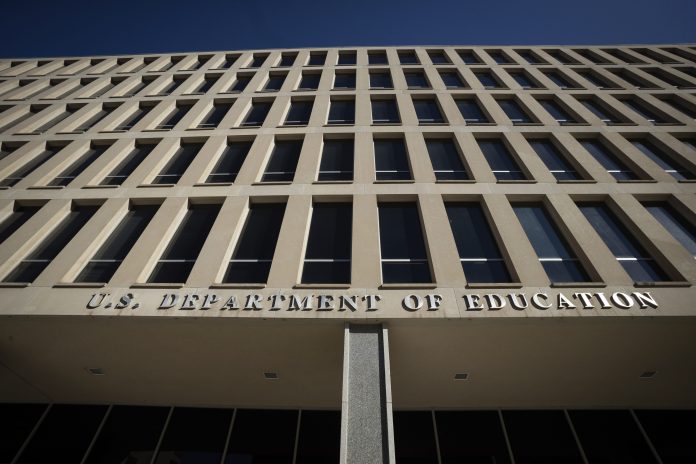- The Department of Education has resumed processing IDR applications, but only for some borrowers.
- The SAVE plan is now absent from the application, following the 8th Circuit injunction.
- New rules may soon require spousal income to be counted, even for those who file separately or are separated.
Late Friday evening, student loan borrowers were alerted by a message on their loan servicer portals that income-driven repayment plan applications will resume processing – for some borrowers.
However, at the same time, the Department of Education posted an update in the legal proceeding initiated by the American Federation of Teachers, raising more concerns for the future.
The key messages are:
- Income-driven repayment plan (IDR) applications will resume immediately for single borrowers (and select married borrowers)
- All eligible IDR repayment plans are expected to start processing by May 10, 2025
- There’s no timeline on when the backlog might be cleared
- Borrowers in the SAVE plan can choose a new plan of their choice (but there’s no requirement for this yet)
IDR Application Processing Has Restarted
The Department confirmed that IDR applications are once again being processed for borrowers seeking to enroll in Income-Based Repayment (IBR), Pay As You Earn (PAYE), or the original Income-Contingent Repayment (ICR) plans.
But for now, only borrowers who file taxes as single, or those who are married with no income, will see their applications move forward.

Borrowers in other situations (such as those married and filing separately) remain on hold. The Department placed many of these borrowers into administrative forbearance until at least July 31, 2025. During this period, interest will continue to accrue, and while the time will count toward Public Service Loan Forgiveness (PSLF), it will not count toward forgiveness under IDR plans.
The SAVE plan remains suspended following a court injunction from the Eighth Circuit Court of Appeals. It no longer appears on IDR application forms, either online or in print.
Spousal Income Changes Raise New Questions
A court filing this week revealed that the Department of Education is preparing to change how it treats spousal income when calculating monthly payments under IBR, PAYE, and ICR. According to the court filing, starting as soon as May 10, married borrowers who file separately or who are separated may still have their spouse’s income included in the payment calculation.
That marks a shift from current practice where borrowers who file separately would not have their spouses income considered. This was mentioned in the earlier court case, and appears to be a bigger issue than previously believed.
Under the Higher Education Act, income-contingent repayment plans are based on the borrower’s adjusted gross income, and, if the borrower files a joint tax return, the combined income of both spouses. This is different that current practice where borrowers could file married-filing-separately and have their income treated individually.
Here’s what the statute says:
(i) For purposes of calculating the borrower’s monthly payment amount under the REPAYE, IBR, and PAYE plans—
(A) For an unmarried borrower, a married borrower filing a separate Federal income tax return, or a married borrower filing a joint Federal tax return who certifies that the borrower is currently separated from the borrower’s spouse or is currently unable to reasonably access the spouse’s income, only the borrower’s income is used in the calculation.
(B) For a married borrower filing a joint Federal income tax return, except as provided in paragraph (e)(1)(i)(A) of this section, the combined income of the borrower and spouse is used in the calculation.
(ii) For purposes of calculating the monthly payment amount under the ICR plan—
(A) For an unmarried borrower, a married borrower filing a separate Federal income tax return, or a married borrower filing a joint Federal tax return who certifies that the borrower is currently separated from the borrower’s spouse or is currently unable to reasonably access the spouse’s income, only the borrower’s income is used in the calculation.
(B) For married borrowers (regardless of tax filing status) who elect to repay their Direct Loans jointly under the ICR Plan or (except as provided in paragraph (e)(1)(ii)(A) of this section) for a married borrower filing a joint Federal income tax return, the combined income of the borrower and spouse is used in the calculation.
The Department is moving to implement broader requirements in response to the court’s injunction, which directed officials to stop implementing regulatory changes that had expanded borrower protections under SAVE and other IDR plans.
Officials say these new interpretations are part of that compliance effort, though some worry the policy oversteps the statute.
Borrower advocates have expressed concern that the Department is being overly cautious in its response to the injunction and may end up penalizing borrowers who are legally entitled to separate treatment of their income – especially since this is how it’s been treated for a decade and many families did a process of married filing separately to save on IBR and PAYE plans.
What Borrowers Can Expect Next
According to the Department, servicers are expected to resume placing eligible borrowers into their repayment plans by May 10. That includes those who filed new applications during the processing pause.
Servicers are also working through a backlog of pending applications and must update their internal systems to reflect the removal of SAVE and other legal changes. Borrowers waiting longer than 60 days may be moved from processing forbearance into general administrative forbearance.
There is currently no ETA on how long it will take to work through the backlog.
Borrowers who had already enrolled in SAVE will remain in forbearance, and those looking to switch to IBR, PAYE, or ICR must apply with a new application.
These changes also impact how forbearances are treated. Time spent in forbearance during application processing will count toward PSLF but not toward standard IDR forgiveness.
Don’t Miss These Other Stories:
How To Get Student Loan Forgiveness (Full Program List)
10 Crazy Ways To Make $10,000 You’ve Never Heard Of
When Do You Need A Lawyer For Your Student Loan Debt?
Create your very own Auto Publish News/Blog Site and Earn Passive Income in Just 4 Easy Steps







